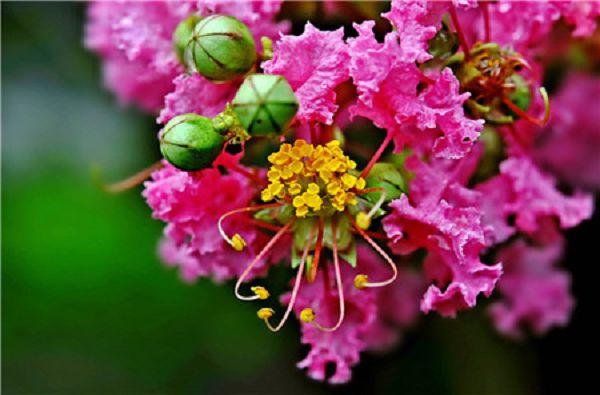Management methods of potted flowers in courtyard
Summer dormant flowers that resume growth after autumn, including semi-dormant species, such as calla lily, cyclamen, gentleman orchid, purslane, Daphne, geranium, hanging bell crabapple, etc., need to be watered more.
For wax plum, plum blossom and camellia that blossom in winter and early spring, watering should be controlled and more water should be sprayed to facilitate the expansion of the bud. For the cold-afraid flower species in the northern region, it is necessary to reduce watering, which can accelerate the Lignification of their new shoots, so as to facilitate their safe passage through the winter. The best watering time is 10:00 or 3pm.
Camellia, plum blossom, wax plum, melon leaf chrysanthemum, primrose, gentleman orchid, cyclamen, ink orchid, Belgian rhododendron, daffodil, etc., which bloom in winter or early spring, should continue to apply a mixture of 0.2% potassium dihydrogen phosphate and 0.1% urea; for most foliage plants, after mid-October.
To stop the application of nitrogen fertilizer, appropriate topdressing of some low concentration of potassium fertilizer, in order to increase the cold resistance of plants; for ornamental fruit potted plants, such as hadai, lemon, kumquat, Tianzhu, winter coral, rich seeds, golden marbles and so on, a small amount of phosphorus and potassium fertilizer can be applied in the first and middle of October.
Pruning for most of the bonsai and potted flowers that must be moved indoors in the middle and late October, the withered branches, disease and insect branches, and thin branches should be cut off first; for the long branches, they should be shrunk in strength; the binding objects that have been modeled for 1 to 2 years can be removed, or they can be re-tied after they are untied, so as to prevent them from being tied up in a fixed position for a long time, injuring the cambium of the branches, causing the branches and leaves to die.
Related
- What if the leaves of potted flowers turn yellow?
- Florescence Control of several Flowers
- Anti-freezing technology and post-freezing nursing technology of flowers
- What is the classification of flowers? What are the common methods of flower classification?
- Prevention and control of alkali and acid damage of flowers in courtyard
- Technology of Anti-freezing and restoring growth of Flower seedlings in greenhouse and greenhouse
- How does flower fertilization not hurt the root? Fertilization technology of flowers
- Key points of disinfection in flower greenhouse
- Several pesticides that are banned or used cautiously in flowers
- How to fertilize the flowers that watch the leaves?



